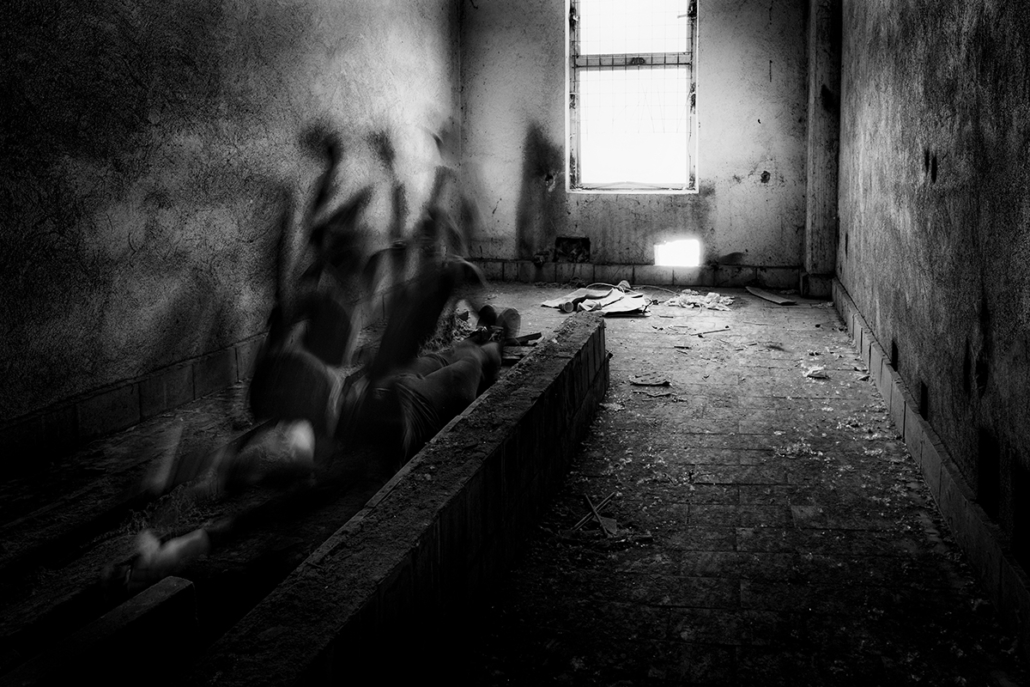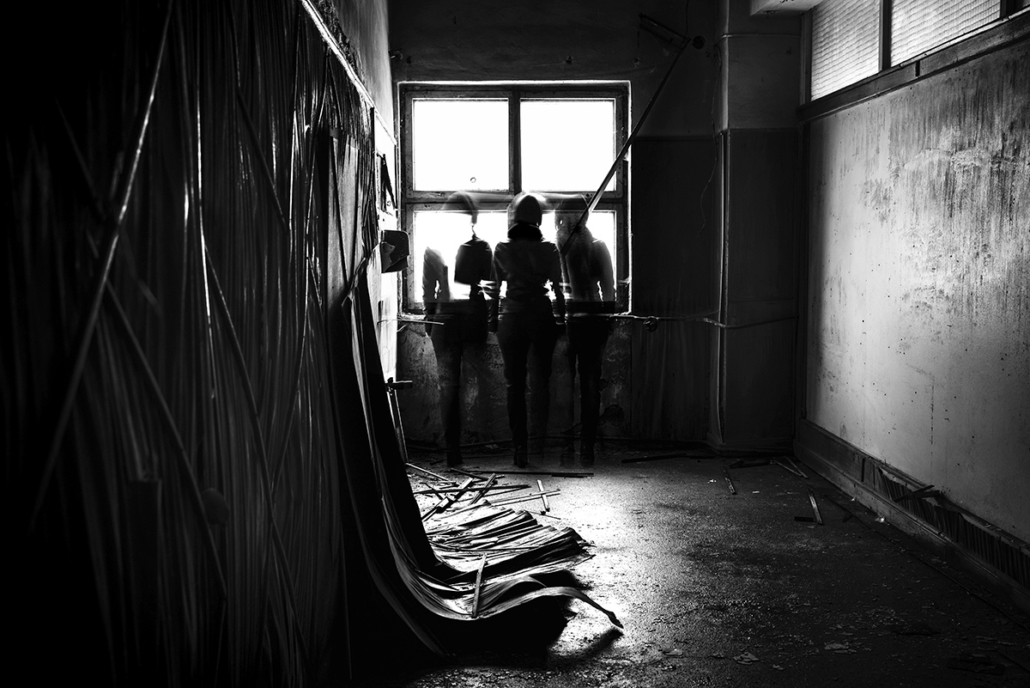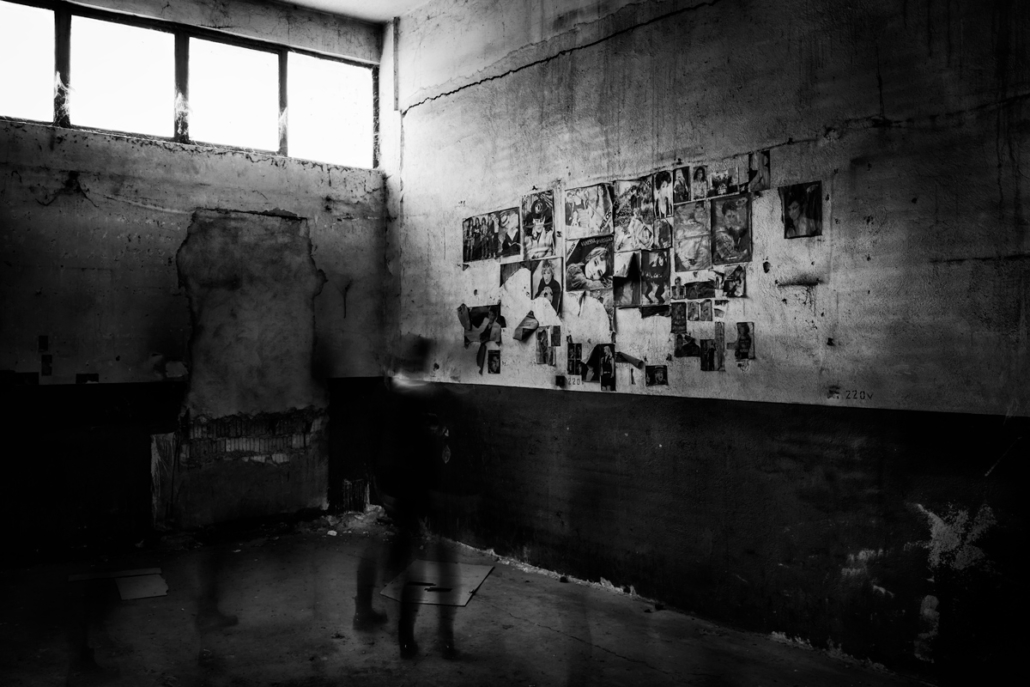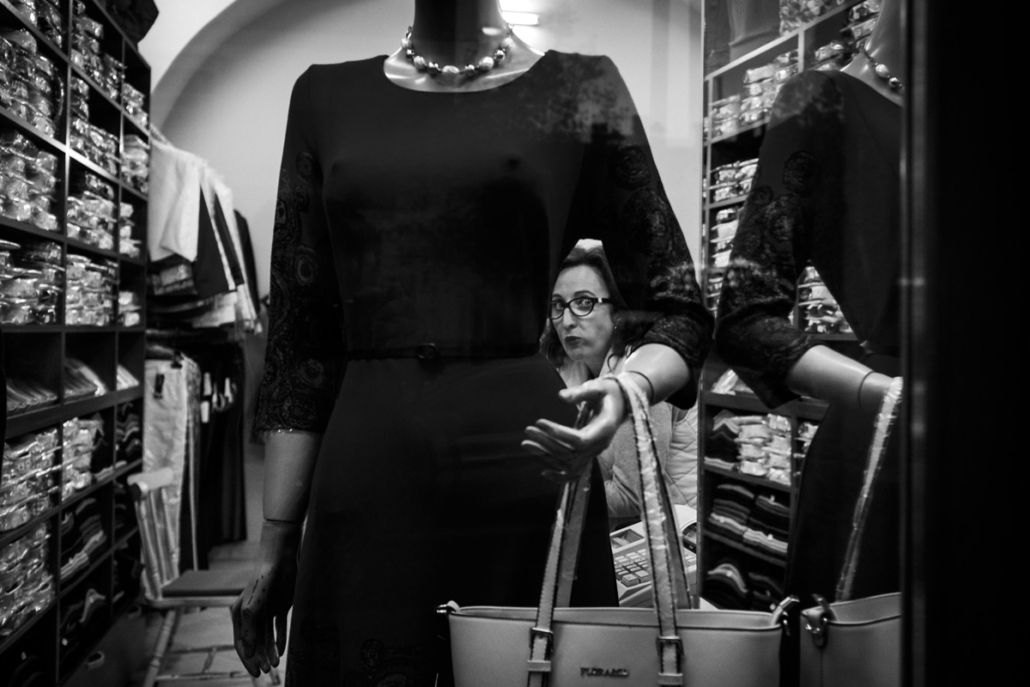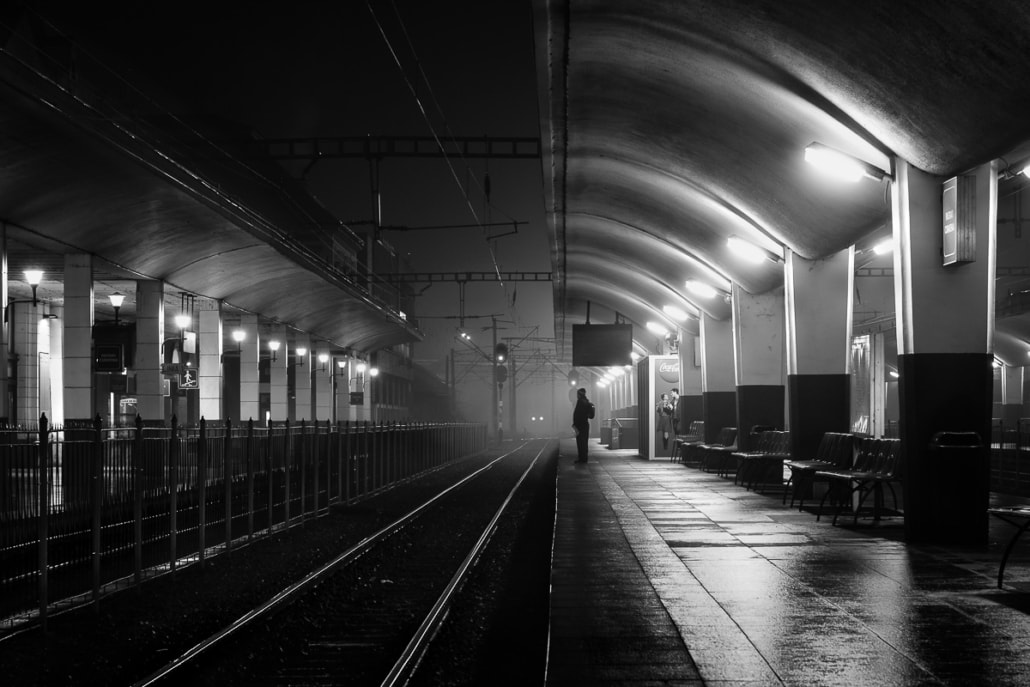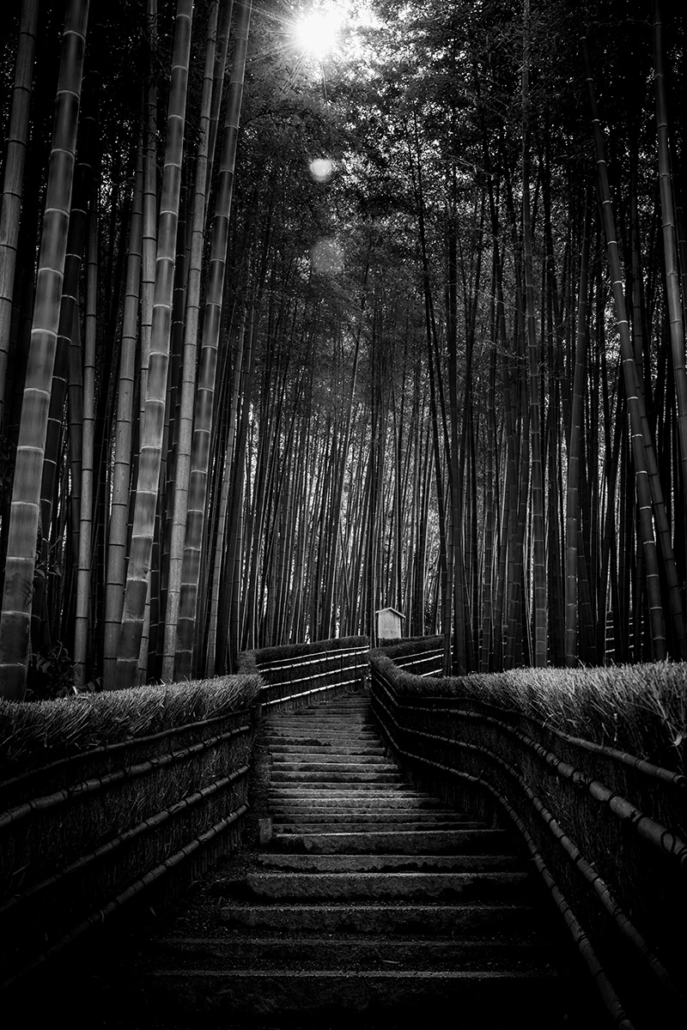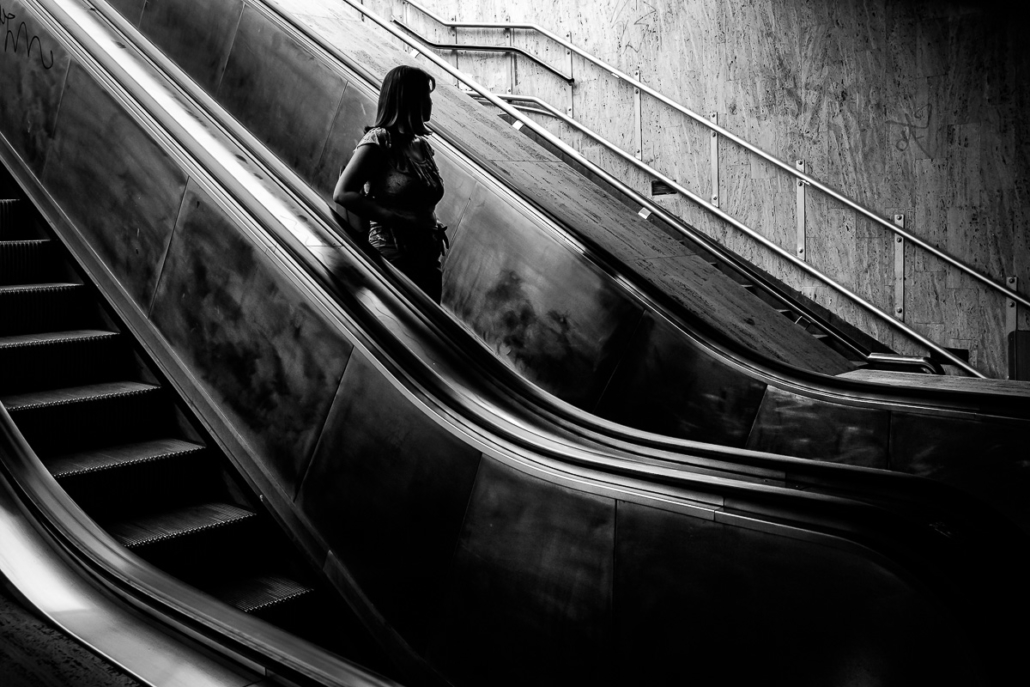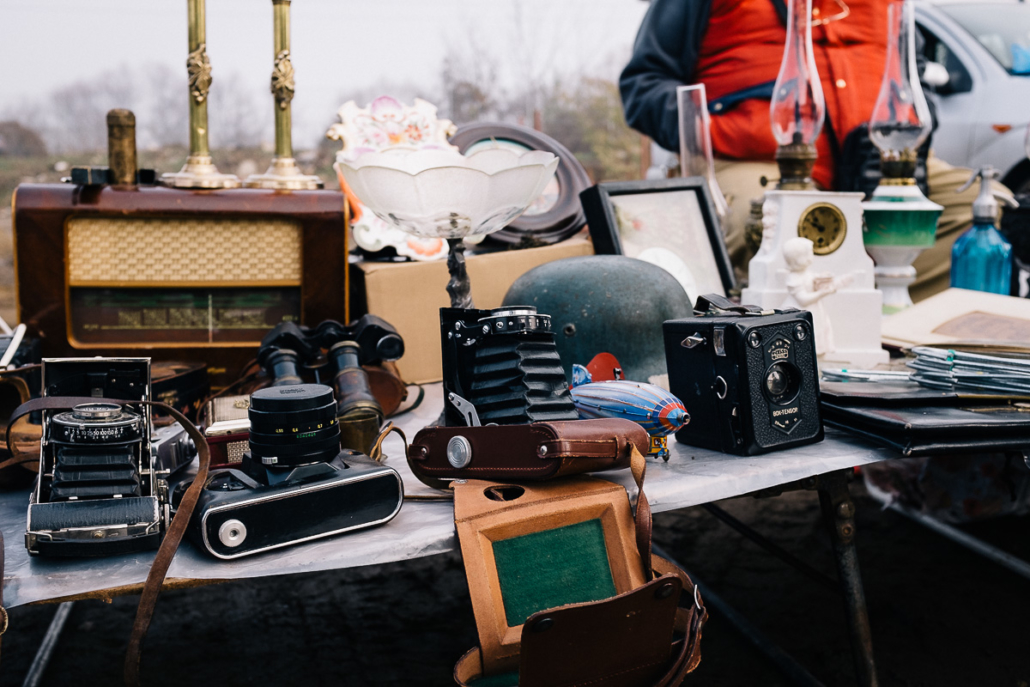As you know, my main style is the black and white urban photography, with often a very strong graphic content. Graphic as in geometry, lines, and pretty good contrast, not… something else 😉 I just love to find the place, spot the subject, wait for the right moment… It’s really my main craft and I love it.
Ghost_02. Part of the Ghost project. Get a print!
Have your own identity
I have always considered very important for a photographer to get its own identity. That way to frame, to shoot, to process, that will first of all make your work stand out, but that will also make it recognisable. One of my best achievements in the last few months is to have people tell me “I knew it was your photo, I recognised your style”. I can’t say how happy I am every time I hear that. First of all, it means that some people are interested in my work (and not being a big shot, it’s always good to know 🙂 ), and maybe more important, it means that my work can be differentiated and identified amongst the other photographies. It may not be everyone’s taste, but at least it exists by its own. And that is good. I now have my own identity, my brand.
And try something new
On the other hand I don’t want to limit myself to this style. I still want to do other styles. This is for example why I’ve started my Ghost project. Besides the street/urban work I’m used to I really like to do urbex: urban exploration. Finding old buildings, abandoned factories, in the state they were left alone years and years ago. The decay, the dust, the rust everywhere. Some find it creepy ; I think it’s just fabulous. The place itself tells a story. But I didn’t want to do the classic urbex (e.g. shoot wide in the room), I wanted to introduce a human element as for my street work. And the idea appeared. Why not introducing an inhuman element in the scene? The ethereal, weird, eerie feeling of a ghost in these abandoned places. I found a great place. I was sold.
Ghost 03. Part of the Ghost project. Get a print!
The benefits
I had to learn everything again. I had to change my way of shooting. Shooting indoor vs shooting outdoor. Direct models, which was something totally new to me. Or put myself into the scene, which believe me is far from being that easy (and I just can’t thank enough the shoot by wifi feature of the newer cameras). Looking for photo spots reached a whole new level, with all the security and legal matters that go with visiting this kind of places. I challenged myself, and it was so great!
My processing skills jumped dramatically, mainly on Photoshop. I went from just polishing a few street shots into creating complex, multilayered composites. Some may not like it, and I totally understand it. It’s at least to try once, for educational purpose. I loved it. But, while talking about processing, one thing remained constant: my black and white style remained. I didn’t want to let that go. I still want to produce a constant and identifiable body of work, and my graphic style is a very important part of it.
Ghost_05. Part of the Ghost project. Get a print!
And now what?
Well, the Ghost project is still ongoing. I want to raise the bar even higher with a few ideas that I hope will materialise, and look good. Working on this project is a good way for me to progress, and also to raise the bar for my urban work. It also helps me a small lack of motivation on the street side of things, and keeps me going.
This is definitely something I will pursue: always trying something new. Expanding your range of abilities can only be beneficiary for you. And, worst case scenario, it can confirm your aversion for some genre (like portraiture for me 😀 ).
Keep in touch for more news about the Ghost project!

